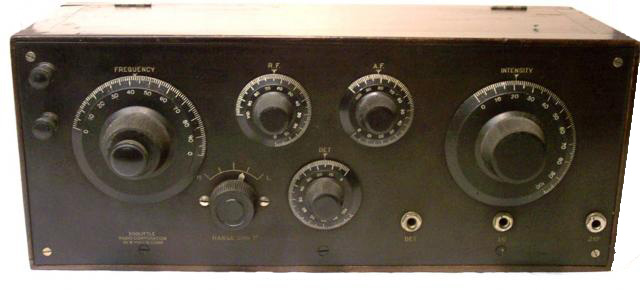
©
1999-2025
Man From Mars Productions
|
|
 |
|
During the earliest days of Franklin M. Doolittle's radio endeavors, he briefly dabbled in the manufacture of various devices before settling into the newly emerging industry of operating a radio station. In June 1920 he signed a licensing agreement with RCA, the government-authorized monopoly for all radio receiving sets and transmission equipment. According to radio historian Merrill Bancroft, Doolittle manufactured three devices: the Type 102 Variable Condenser, the Type 105 Crystal Detector Stand, and the Type 100 Panel Type Receiving Set. The device shown above is one of only two known Doolittle-manufactured radios. It is a six-tube unit with a three-tube broad band untuned RF amplifier. It was designed for use with an external loop antenna as was the RCA Radiola VI model in 1922. During the first few years of broadcasting only two frequencies were available for commercial stations: 360 meters (music/concerts/lectures) and 485 meters (market/weather reports). By about 1924 the Doolittle receiver would have been somewhat obsolete since RF amplifiers and vacuum tubes had been greatly improved. Merrill Bancroft bought his Doolittle radio in the early 1990s at an antique shop in Antrim, NH. The other known unit was owned for many years by the late Ralph G. Thorn of Bayport, NY. After Doctor Thorn's death the radio was sold as part of an estate auction and, by luck, the high bidder was John Doolittle, the son of WPAJ/WDRC founder Franklin M. Doolittle. For more information refer to Merrill Bancroft's article, "Franklin Doolittle: Connecticut's Radio Pioneer," in the Spring 2013 issue of The AWA Journal, the quarterly bulletin of the Antique Wireless Association. Click for more on Franklin M. Doolittle |
